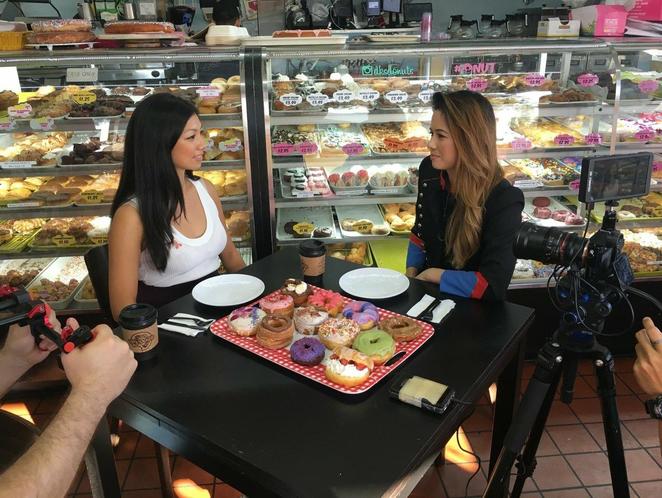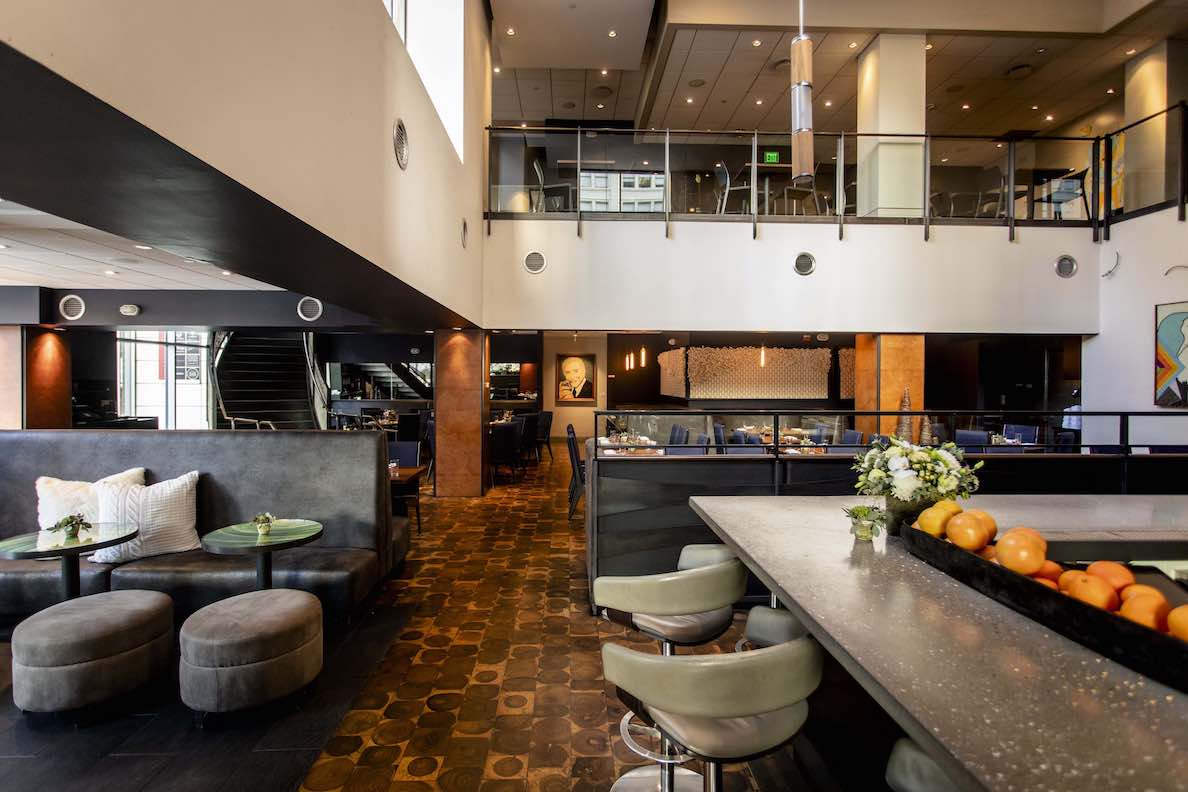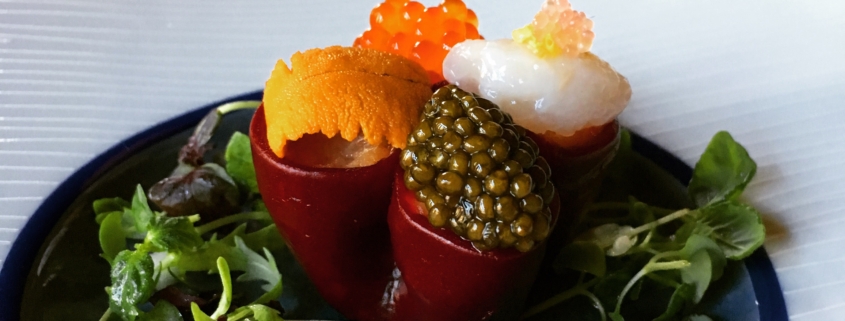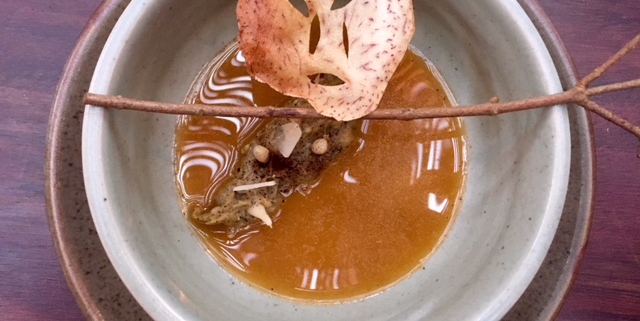TASTE AWARDS Winner Family Style’s Stacy Fan on Culture, Cook and Communal Virtual Dining
“Family Style” won an 11th Annual TASTE AWARD for Best Ethnic Lifestyle Series, Program or Film, as well as having 3 nominations for Best Food Program – Online & Streaming, Best Food Travel Series – Online & Streaming, and Best Branded Program, Native Content, Video, or Advertisement
Stacy Fan is a member of the “Foodie Fam” – the eight-person Asian cast of the Stage 13 award-winning, unscripted docu-series “Family Style.” The 12-episode digital series features the “Foodie Fam” exploring popular Asian restaurants and cultural locales, with each episode ending around a table sharing a meal. The series takes viewers on an enriching food journey to bring the intricacies, history, and flavors that make Asian culture and food so enjoyable.
As a member of the ‘Foodie Fam’ Fan brings unique knowledge and love for culture, cuisine, and sharing family moments around the table. Season one guests included: Daniel Dae Kim (“Hawaii Five-O” and “The Good Doctor”), “Fresh Off the Boat” actor Hudson Yang and his father, CNN journalist Jeff Yang, “Cloak and Dagger” actress Ally Maki, Wong Fu Productions founder Philip Wang “Crazy Rich Asians” and “Shadowhunters” star Harry Shum Jr. and “Crazy Rich Asians” director Jon M. Chu, among others. The series is produced by Stage 13 and Director Justin Lin’s (“Star Trek Beyond,” “F9,” “True Detective”) production company, YOMYOMF, with Executive Producers Phillip Chung, Marie Jamora, and Jason McLagan.

Fan shared some of her favorite moments in the series, and how she is handling the shelter at home situation.
1. “Family Style” shows the bond between friends, family, and the ceremony and story behind the food and dishes we eat. How important is that tradition of eating around a table – even if it’s virtual – coming out of the shelter at home orders?
We’re living in a bit of a groundhog-day at the moment, so taking the time to sit down and enjoy a meal with the ones we’re sheltered in place with, or virtually, is something to look forward to. It also allows us a moment to be grateful for what we have, being able to stay safe at home, and having food on the table. It’s more important now than ever to come together to eat for support during this time. It can be such a calming experience, especially if you’re indulging in your home comfort foods. They really go hand-in-hand for soothing the soul. It’s especially nice to make those dishes right now that remind you of your family that you can’t see.
2. The restaurants showcased in the show are all small businesses that have felt impacted during the COVID-19 shutdown. How are you and the cast of “Family Style” supporting them?
Stage 13 has created a campaign called #stage13supports to highlight various restaurants featured in season one of “Family Style” on Facebook and Instagram. We spotlight sensational food available for takeout and where possible, give a humanistic backstory on the restaurants. We hope this helps drive traffic to their restaurants at this challenging time. I’ve also been buying takeout from local eateries for my family and friends as a way to introduce them to the delicious cuisines, and contactless drop off’s of course!
3. How does tradition play into season one of “Family Style”?
Most of the restaurants we visited in season one of “Family Style” were family run and had traditional recipes passed down through the generations that emphasized the importance of family, heritage, and culture as well as the significance of carrying on those traditions.
Some of the restaurants were founded by the younger generation of Asian Americans designing new dishes that reflect the fusion of their own cultures within an American context. Button Mash, for example, infuses traditional Vietnamese dishes but with the restaurateur’s (Nguyen Tran’s) own flavors and his take on the way he serves up the dishes. We are all so mixed today, whether by blood or culturally, and I think that was mirrored beautifully in the food we experienced and the message that the restaurants presented through those dishes.
4. How important is the bond of food culturally?
Growing up in Hong Kong until the age of six, I used to go for Dim Sum meals on Sunday with my family that would last hours. Once I moved to England, I’d go for roast dinner at my grandparent’s house every Sunday. A totally different meal, in a completely different atmosphere, but they were about bringing the family together. Equally so traditional to both sides of my culture. To this day, they speak to different parts of me. I have my roast dinner with my English family, which propels me back to being six years old in England. Dim Sum, I’m back in Hong Kong, surrounded by Cantonese catch-ups and a large family setting.
Speaking to people from all over the world during “Family Style,” it became apparent that everyone had food memories that were so woven into their memories of growing up in the family they were raised in. So much about food is entwined into the fabric of who we are. It’s some of our earliest memories, and eating some of the traditional foods that we grew up with can be the best way to give ourselves a little home comfort.
5. How have you been spending your time during the pandemic shelter at home orders?
I’ve been calling friends and family a lot. Having time to connect with them has been a priority for me during this time. In addition to ordering to-go from my favorite mom and pop shops, I’ve been cooking many meals from scratch. I’m enjoying taking the time to really experiment with some recipes and have fun with baking. It’s been a good time to get back to basics. I’ve enjoyed exploring new methods as well as recreating dishes that I ate growing up. I felt this urgency to eat the food I used to have as a child. I called my dad for the recipe for the congee that he used to make for my brother and I as kids, and I’ve also spent time perfecting the roast potatoes my English Nan used to make for us every Sunday. They were legendary!
6. Season two is in development – after having eight weeks at home, what tradition and food would you want to see in an episode, and how do you think it will be different from season one?
I would love to see what people learned to cook during the shelter in place in one episode. Perhaps we learned new recipes from our family that we never had the time to prepare before, and we can share some of those? Did we finally start to take notice of how our parents or grandparents made their traditional dishes? It is a really great time to take the time to learn about our family’s traditional recipes. Especially now that we have the time and are in a position to appreciate them at an earlier stage in life so that we can pass on to the next generation, I would love to have some of those discussions around a table.
I also think the conversations we have might pivot towards eating intimately during this time of social distancing. What was that like for us? Also, how hard the restaurant we’re sitting in worked to survive those tough months, and a reality check on what we have taken for granted pre-COVID-19. I believe we will relish more than ever, the food in front of us, the conversations over that meal, and indeed the company we keep.











